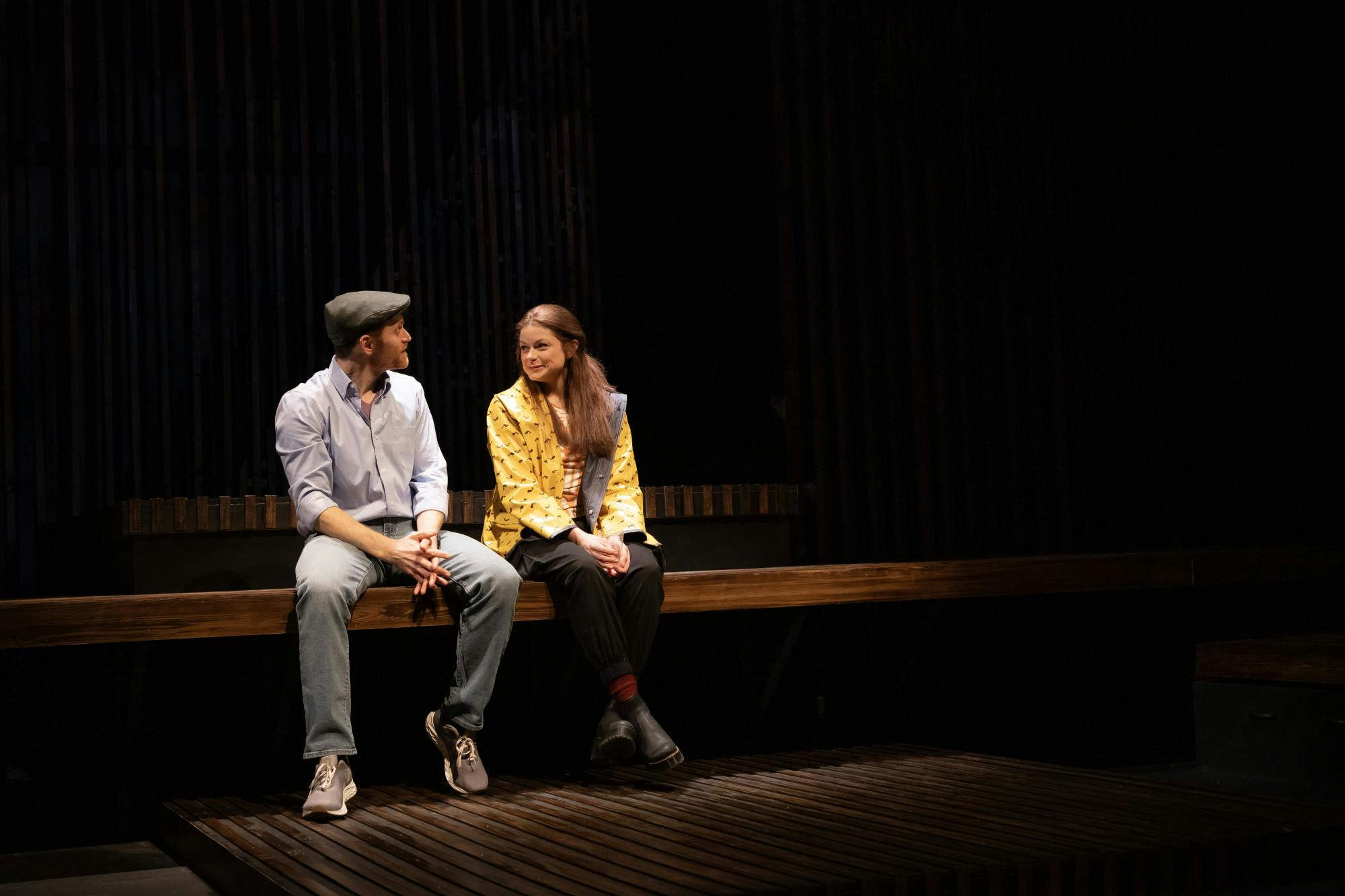“Constellations,” from British playwright Nick Payne, premiered on Saturday, Jan. 27 at Northern Stage in White River Junction. The unorthodox modern play portrays the life-altering effects of human decisions. The play presents raw and intimate moments chronicling the relationship between a British couple — the beekeeper Roland and physics professor Marianne — set to the music of a live pianist.
In an unusual structure, the scenes take place non-chronologically while presenting multiple, simultaneous realities corresponding to parallel universes. The couple’s interactions in each short scene are repeated a few times, and each iteration is distinguished by some change that produces a different outcome in each respective universe.
This structure reflects the play’s broader themes around time and its relationship with the human experience, particularly in the face of illness and anticipated loss.
According to the play’s director and Northern Stage’s associate artistic director Sarah Wansley, what stands out to her about the play is the way that it approaches themes of memory and heartbreak.
“When you lose someone [you love], you don’t lose the time you had with them … and learning to think about time in a less linear way, I think, is a really powerful message,” she said. “This play really asks us to separate the pain of losing someone from the joy of being with them and remembering that there still is all of that as well.”
Wansley wanted to incorporate these themes into the set design. To do so, she collaborated with scenic designer Joey Mendoza and lighting designer Mary Ellen Stebbins.
“[We] wanted to play with scale…we were really interested in ‘What does it mean to have a play that is both a two-hander and is a love story, but also is about the universe? And how do you put the universe in a theater?’” Wansley explained.
Following artistic and technical discussions among the three, the set came to its current form of a minimalist, wooden, slatted design with different ground platform levels. The platforms extended nearly 20 feet up, according to Mendoza and Stebbins.
“When I was trying to conceive [of] what the play should look like, I just kept thinking that it should soar … that it should seem infinite,” Mendoza said. “And so, those platforms connect with the walls. My assistant call[ed] them ribbons; I see these ribbons of platforms that just go up into the heavens.”
All three collaborators recalled how they envisioned a set that could evoke cosmic vastness and ethereality in an abstract, transcendent manner — a quality that reflects the play’s defiance of a stable or fixed reality.
“We [wanted to] have a set that has the ability to … be pierced by light and feel kind of ethereal and change; then we can direct our eyes up … and we can make a statement visually,” Stebbings explained.
Wansley also recalled negotiating this question of realism for the props: a tactic she said is typically employed to distinguish between repetitive scenes like those in “Constellations.” While seeking not to rely on props here to mark these differences, she said that she still wished to incorporate a limited number to present some real-life activities, which were important to her. Stebbins also pointed out that the main focus of the play was the storyline, not the objects on stage.
“I really believe this play doesn't require any … assistance from design, in terms of like, ‘you have to have a table or you have to have a chair,’” Stebbins said. “So, going into the process … I said what I don’t want to do is slow the play down with anything … because the play wants to [just] kind of rollout.”
Wansley also made the unique choice to have a live pianist, Rose Van Dyne, perform segments of deconstructed pop music by the play’s composer and sound designer, Alek Deva. Van Dyne played music on a grand piano partially concealed by the set.
According to Wansley, this choice reflected a tonal dichotomy that she sought to achieve between an air of poetic elegance and a playful and whimsical character. The elegance could be found in the mere presence of the grand piano, and the playfulness could be found in Van Dyne’s piano playing techniques. These included plucking strings — rather than smooth gliding along the keys — and hand percussion.
Wansley has observed how audiences have reacted with different degrees of laughter to the play’s comedic versus dramatic aspects. Each person’s response to its messages is subjective.
“I think what I’m finding is that everyone comes to this play with a really different personal experience … it is a play about love, it is a play about illness, it is a play that asks questions about end of life,” she said. “And I think everyone at different stages in their life has a really personal connection to some of those questions.”
Avery Lin ’27 is an arts editor and writer from New York City. She studies Comparative Literature, including French and Classical Greek, at Dartmouth and also writes for Spare Rib Magazine.




